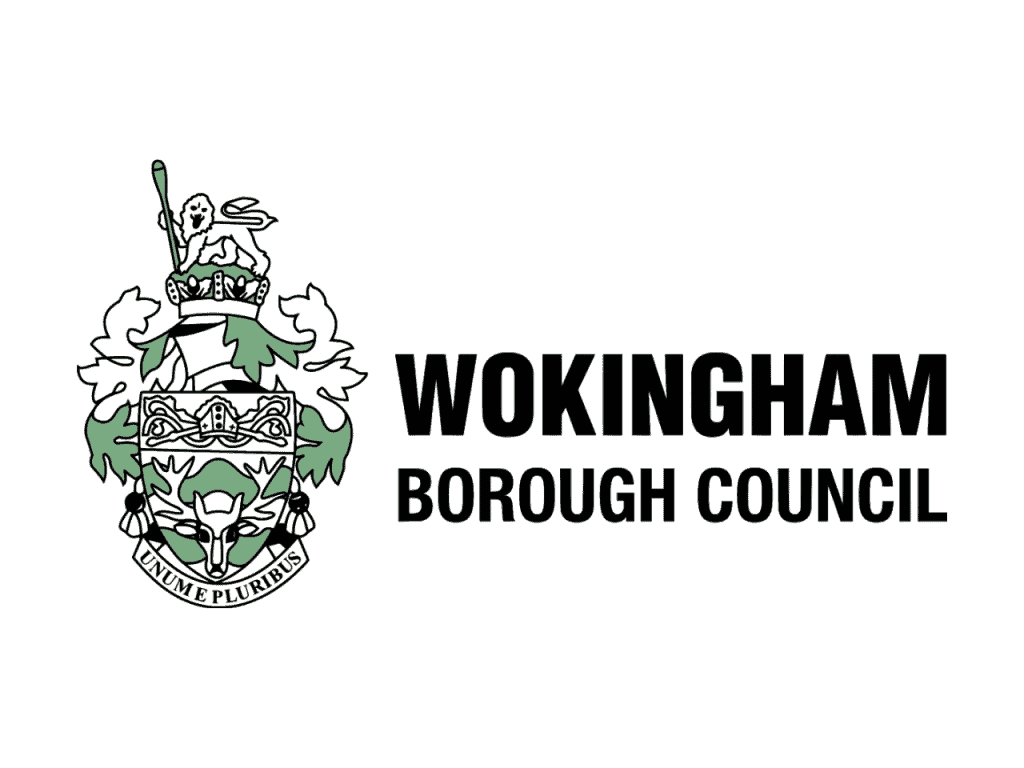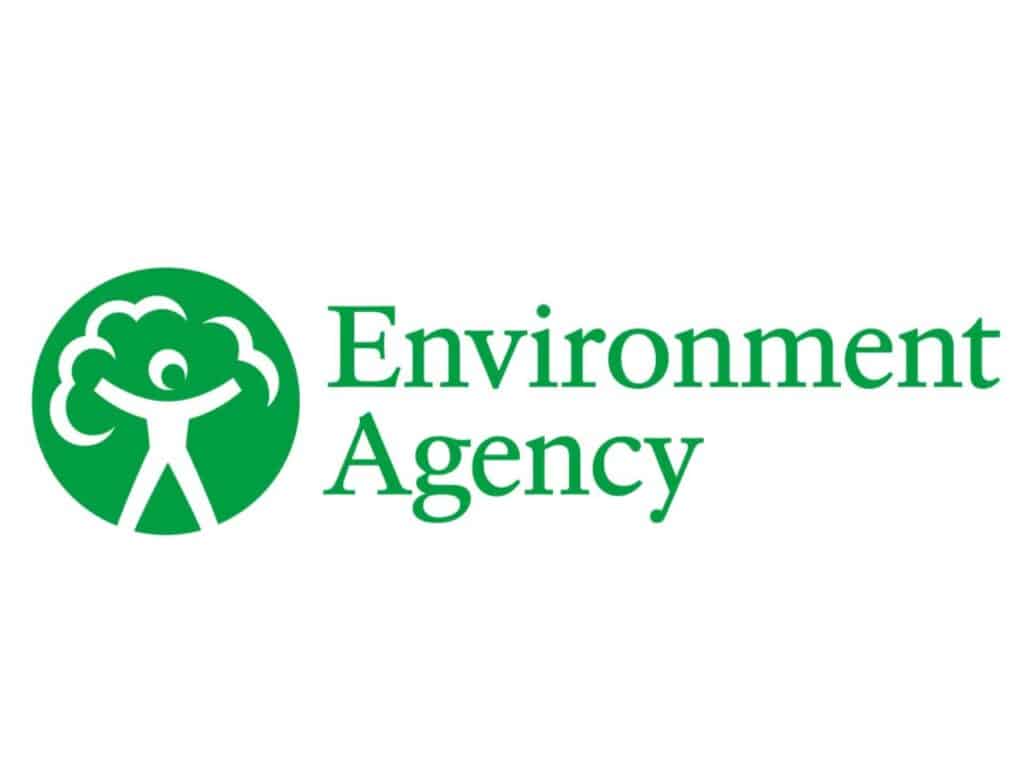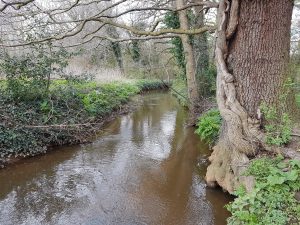
An exciting partnership project aims to restore and revitalise 230 metres of the Emm Brook as it runs through Riverside Park, Woosehill. The river will be redirected along its meandering, historic route, breathing life back into this section of the river.
The result will be a much more natural channel that will be a haven for aquatic wildlife. Three new bridges and a new pond will also increase the appeal of the river as a wonderful asset to the local community in Wokingham.
The project will also take action to improve the Brook’s water quality, engage communities through a series of events and run sessions with local schools.
The South East Rivers Trust has been developing the project since 2018 with the Environment Agency and Wokingham Borough Council. The council gave the project planning permission in the summer of 2023 and the partnership is now seeking funding to carry out this vital restoration enhancement.
Is your company or organisation looking to fund a major river restoration project? To discuss the project, do get in touch with our team via info@southeastiverstrust.org or by calling 0845 092 0110.
Why the Brook needs restoring
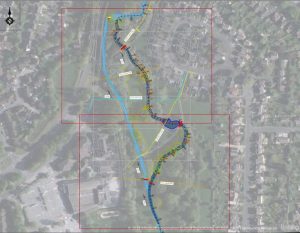
At some point the past, the Emm Brook through Riverside Park was diverted in order to power a mill. The mill has long since closed and the site been converted into housing. The “diversion” is a uniform, straight and featureless channel with little flow or habitat diversity. Impediments such as weirs inhibit the ability of fish to pass between sections of the 9km Emm Brook and beyond into the River Loddon, which rises at Basingstoke and flows north easterly over chalk and clay, joining the River Thames just west of Wargrave.
Full details of the challenges faced by the river and actions being taken to address them can be found on the Loddon Catchment Partnership Action Plan Storymap.
The vision for the Riverside Park section of the Emm Brook is to turn it into a natural, healthy river with a variety of flow types – one which gently meanders and has a series of deep pools and shallow riffles. This would create a patchwork of different habitats that support a rich and diverse community of plants and animals.
The remnants of the original channel still exist and show great potential to support exactly this type of dynamic and wildlife-rich river habitat. Through significant habitat enhancements, the project would promote species abundance and diversity In turn, this will enhance the visual amenity and landscape character of the popular public greenspace.
As well restoring flows through the river’s original path, plans include a new wildlife pond, and three new bridges.
A straight river in need, inhibited by weirs and shading
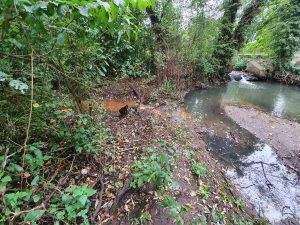
Although extremely popular with local people, the section of the Emm Brook running through Riverside Park has issues which impact its health and prevents it from being able to support a richer wildlife community.
Several barriers divide the river into semi-isolated sections. These “steps”, such as weirs, make it difficult, often impossible, for fish and other aquatic life to move between the fragmented sections.
Even small barriers will prevent fish and other animals from making their way upstream. All fish need to be able to access a range of different habitats during their life. Fish need shelter when they are young, spawning grounds as adults and protection from the elements during different seasons. They are unlikely to find all the habitats they need if they are trapped in just a small stretch of river.
When a river is fragmented, become isolated and more vulnerable to the effects of pollution, drought, and disease. Weirs like these also drown out many of the natural river features upstream, degrading the habitat further. Read our blogs How Weirs Affect Rivers and Busting Myths About Weirs.
There are two barriers in just this short section of the Emm Brook. The first is a large concrete one, more than a metre high. The other is slightly more subtle, a ridge formed by a sewer pipeline and the concrete reinforcement put in place to protect it. This means fish from lower down the Brook, or from the main River Loddon, can’t make use of potential habitats upstream.
Selected trees will be reduced or removed to let light in, encouraging marginal plants to thrive.
Plants in a river channel provide shelter and food for a wide variety of organisms. They are also vital for some animals, like dragonflies, to complete their lifecycle. Dragonflies use plants to climb out of the water to transform from their aquatic nymph stage into winged adults.
A lethal cocktail from our roads
Part of the current stretch of the diverted, straight Emm Brook runs alongside the main road. Surface water drains flow straight to our rivers, carrying rainwater and pollutants from the hard surfaces such as roads and roofs.
This road run-off contains a cocktail of hundreds of different chemicals including heavy metals, hydrocarbons and ammonia, as well as the silt and sediment which build up on our roads. These come from exhaust fumes, wearing of car brakes and tyres, corroded bodywork and roadside infrastructure.
Many of these are directly toxic to aquatic wildlife, even in small doses. Some are not easily broken down and can persist in the environment for a very long time.
Community Engagement
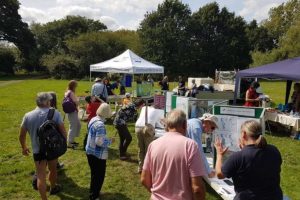
The health and wellbeing benefits of being able to connect with nature are well documented. A key ambition for this project is to help reconnect people who live in nearby towns to the green and blue spaces right on their doorsteps.
When we announced the project, we ran a series of events, encouraging people to become more involved with caring for their local river and what they can do at home to help rivers.
Examples of our community engagement so far include the Emm Brook School River Challenge in September 2021. Primary schools competed to get the most pupils to become certified Junior River Rangers for the chance to win a class set of river dipping equipment. This combined work in school and completing the tasks at home with family or friends.
The contest was won by the Hawthorns Primary School. That summer we also led guided walks, teaching the community about the importance of their river.
We also held two Emm Brook Community days in August 2019, when we outlined our intentions for the project.
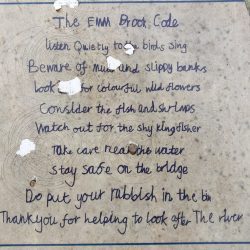
In March 2021 we gave an online presentation to the Wokingham District Veteran Tree Association. They do excellent work to educate the community and protect some of the amazing veteran trees across the borough.
A fully funded project would allow us to continue to work with schools and communities. For example using our experience with campaigns such as our anti-pollution ‘Yellow Fish’ programme, spread the message that only rain should go down the drain.
Many organisations already care for their local river. In this case, the Friends of the Emm Brook (FOTEB) are a fantastic local group working to conserve the Emm Brook and surrounding green spaces.
They have created a delightful orchard which is part of a wider community led regeneration project. For this and other information on their activities, visit their website.
Who has been involved so far?
This exciting restoration scheme was developed by the South East Rivers Trust in conjunction with other members of the Loddon Catchment Partnership and is supported by Wokingham Borough Council and wider partners.
The Loddon Catchment Partnership brings together local people and organisations to plan and deliver positive actions that will improve our water environment. Together, the partnership can look at identifying and delivering projects that will help to improve the watercourses in the catchment. This can be achieved with coordinated action between all those who use water or influence land management, by looking at the wider, catchment scale impacts of local activities and working with neighbours to reduce negative environmental impacts.

